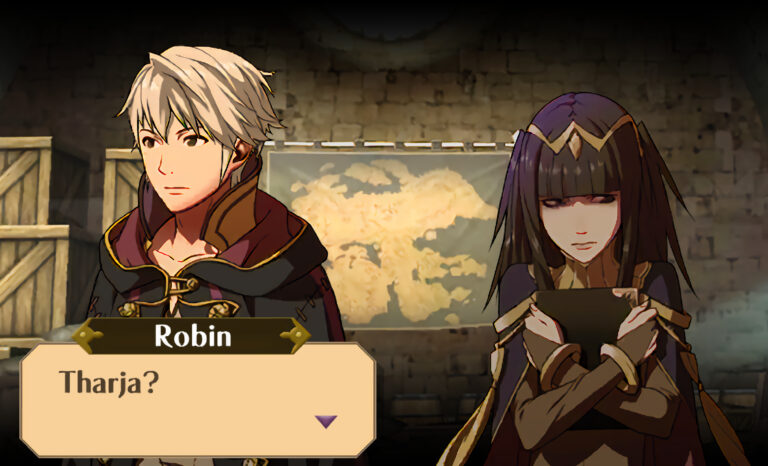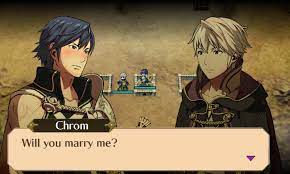Culture
How Fire Emblem Awakening Saved the Franchise Ten Years Ago
The name Awakening ended up being a better description than anyone realized it would be.

Off The Grid – Tactical Strategy Was Still Niche In 2013
Fire Emblem Engage is currently playing to rave reviews, hot on the heels of Three Houses doing the same. Characters such as Marth, Chrom, and Robin appear in titles ranging from Smash Bros to the musou-inspired Fire Emblem Warriors series. And, of course, there’s a gacha game for mobile that is printing money for Nintendo. You can’t swing a lance through the Big N’s catalog now without hitting one of the many anime swordsmen popularized by the tactical powerhouse. But it wasn’t always that way. Heck, it wasn’t even that way ten years in the past.
Today, it seems unthinkable that Nintendo almost got out of the Fire Emblem business. But more than a decade ago, the publisher was ready to give up on the beloved but extremely niche series. It decided that if the latest installment didn’t sell at least 250,000 copies, it would be the final one. Awakening hit shelves in North America on Feb. 4, 2013, and it more than delivered. It would sell over 2 million copies, delivering a much-needed jolt to the fortunes of the Nintendo 3DS while surpassing both Nintendo and developer Intelligent Systems’ wildest expectations turning Fire Emblem into a major franchise.

Image: Nintendo
Working with the knowledge Awakening could be the last FE ever, Intelligent Systems was left with little choice but to swing for the fences. This offering would honor previous traditions, so longtime fans wouldn’t feel left out if it did turn out to be a swansong. The strategy series is well-known for its difficulty, but to ensure franchise-saving sales it needed to be accessible to a wider variety of players. New Mystery of the Emblem introduced Casual Mode in Japan, allowing players to experience tactical strategy without the controversial permadeath FE made famous. Awakening introduced Casual Mode to American players, laying the groundwork that Intelligent Systems is still successfully building on. As Planner Nami Kamuro told Official Nintendo Magazine, they consciously tried to make the game as close as possible to the normal stance for Nintendo in terms of being accessible and easy to play. So strategy RPGs, the most hardcore of genres, would soften just a little and became all the better for it. But when players were ready to go to a tougher experience, Awakening would quite happily kick their butts. Classic Mode was the traditional setup with permadeath enabled. Three difficulty modes: Normal, Hard and Lunatic were available and after beating the game a special difficulty, Lunatic+ was unlocked.
Designers also wanted a focus on building relationships. It worked, as losing a character feels like losing a friend. Support had been an important part of the series for years, primarily manifesting in combat boosts for characters who fought in close proximity to each other. There were bits of dialogue, but not so much they could be mistaken for a full character backstory. Awakening decided to add companionship elements that after enough time, could even evolve into romantic pairings. Later, the characters’ children could take to the battlefield. Each character had dozens of support conversation options, making them feel much more like friends and less like chess pieces a player might not be bothered about sacrificing.

Image: Nintendo
These choices took made Fire Emblem less about axes and lances, and more about friends and family. The support system has only grown in the years since Awakening, and influenced numerous other titles. Recent superhero hit Midnight Suns, for example, sees the player spend as much time watching movies or playing video games with Spider-Man as they do fighting criminals.
Awakening snapped up all kinds of awards and accolades, smashed sales records, and, most importantly, ensured Fire Emblem wasn’t going anywhere for a long, long time. For many gamers, it was their first taste of tactical RPGs and paved the way for other similar offerings to find success in North America. Awakening is still considered one of the best games in the Fire Emblem series by many. Its ranking can be debated, as these things always are. But it’s impossible to deny its importance. We wouldn’t be playing Three Houses or Engage today had Awakening not swung big and connected. It still holds up and because it is so beloved, there are countless guides for those who want to give it a shot.
RPGs are all about replaying the story to see how things turn out if a different path is taken. What if Nintendo hadn’t given the ultimatum? Would Intelligent Systems have tried as many bold moves? Fire Emblem’s sales numbers were dropping, even in Japan. In genre terms, this was a franchise headed for the bad ending. Thankfully, the developer managed to perfectly walk the tightrope. Intelligent Systems improved on the parts that kept fans coming back. They added a more casual difficulty allowing more players to pick Fire Emblem and have less stress trying it out.
The name Awakening ended up being a better description than anyone realized it would be.

-

 Features4 weeks ago
Features4 weeks agoFarewell to a Beloved 13-Year-Old Isekai Anime That Brought Us Endless Laughter
-

 Technology4 weeks ago
Technology4 weeks agoGamification and Productivity: What Games Can Teach SaaS Tools
-

 Features3 weeks ago
Features3 weeks agoThis Upcoming Romance Anime Might Just Break the Internet; Trailer Just Dropped!
-

 Features2 weeks ago
Features2 weeks agoDon’t Watch These 5 Fantasy Anime… Unless You Want to Be Obsessed
-

 Culture4 weeks ago
Culture4 weeks agoIs the Gaming Industry Killing Gaming Parties?
-

 Features2 weeks ago
Features2 weeks ago“Even if it’s used a little, it’s fine”: Demon Slayer Star Shrugs Off AI Threat
-

 Game Reviews4 weeks ago
Game Reviews4 weeks agoCall of Duty and the Myth of Military Realism: Tactical or Just Tacticool?
-

 Guides4 weeks ago
Guides4 weeks agoHow to Earn and Spend Diamonds in Mobile Legends
-

 Technology4 weeks ago
Technology4 weeks agoDigital Cash: For Gamers Who Don’t Ask Permission?
-

 Guides4 weeks ago
Guides4 weeks agoHow to earn a lot of gold in WoW The War Within, a step-by-step guide when playing as a druid
-

 Technology4 weeks ago
Technology4 weeks agoDiscover the Top PDF Drive Tool Today
-

 Game Reviews2 weeks ago
Game Reviews2 weeks agoHow Overcooked! 2 Made Ruining Friendships Fun






